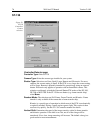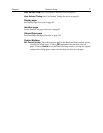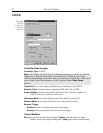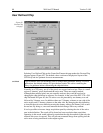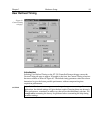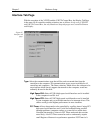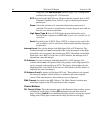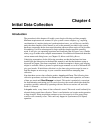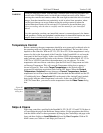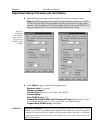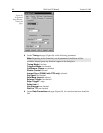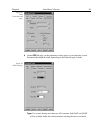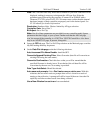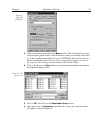
84 WinView/32 Manual Version 2.4.M
compatible with
Use Interrupts
operation (page 370), a timing mode
available when using the ST-138 Controller.
ECP:
Provided for the MSP-100 only. Requires that the computer have an ECP
(Extended Capability Port), which is a type of enhanced-performance
parallel port.
Demo:
Allows the software to be exercised without being connected to a
controller. This mode is used primarily for demo purposes and could not
be used in an actual measurement.
High Speed Type B:
Select if PI ISA high-speed serial Interface card is
installed in the computer in an
EISA slot
. Type B is not available for all
controllers.
Serial:
Provided for the V/ICCD. When V/ICCD is selected, since serial is the
only possibility, serial is selected by default and the Interface tab page is
not provided.
Interrupt Level:
Can only be changed with High Speed ISA or ECP interface. The
selected interrupt level
must
correspond to that set by the jumpers on the High
Speed ISA card or assigned to the parallel port (ECP). The default for the High
Speed ISA card is IRQ 10. In the case of a PCI interface, the interrupt level is
reported but cannot be changed.
I/O Address:
Can only be changed with High Speed ISA or ECP interface. The
selected address
must
correspond to that set by jumpers on the High Speed ISA
card or assigned to the parallel port (ECP). The factory default address for the
High Speed ISA card is 0A00. In the case of a PCI interface, the I/O Address is
displayed but cannot be changed.
I/O Address 2 and 3:
Applies to High Speed PCI only. These addresses are reported
but cannot be changed; address selection is automatic and under computer
control. With other interfaces, these addresses are not displayed.
DMA Channel:
Provided for the MSP-100 only. The DMA Channel selection must
match that assigned to the ECP parallel port at the computer.
Control Buttons:
OK, Cancel & Help:
These three buttons apply to the Hardware Setup window and are
available for all tab pages. Clicking
OK
implements the selections from all
pages. Clicking
Cancel
closes the Hardware Setup window, leaving the original
settings intact. Help opens context-sensitive help for the active tab page.



